#Ptolemaic art
Text

Ancient Egyptian faience inlay depicting a falcon with spread wings. Artist unknown; 4th cent. BCE (Late Period or early Ptolemaic). Now in the Metropolitan Museum of Art.
#art#art history#ancient art#Egypt#Ancient Egypt#Egyptian art#Ancient Egyptian art#Late Period#Ptolemaic#Ptolemaic Egypt#Ptolemaic art#animals in art#birds of prey#falcon#inlay#faience#Metropolitan Museum of Art
888 notes
·
View notes
Text


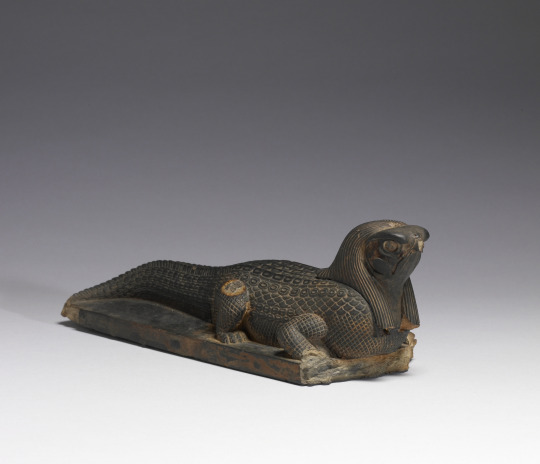
~ Statue of a Crocodile with the Head of a Falcon.
Culture: Egyptian
Date: ca. 380-250 B.C.
Period: Late Period-early Ptolemaic Period; 30th Dynasty
Medium: Steatite
#ancient#ancient art#history#museum#archeology#ancient egypt#ancient sculpture#ancient history#archaeology#Egyptian#egyptology#Egypt#crocodile#falcon#ptolemaic#late period#30th dynasty#steatite#ca. 390 b.c.#ca. 250 b.c.
3K notes
·
View notes
Text

Gold diadem with herakles knot, crafted in Alexandria, Egypt, 220-100 BC
2K notes
·
View notes
Text

Antony and Cleopatra - art by J. C. Leyendecker (1910)
#j. c. leyendecker#antony and cleopatra#illustrations#fantasy art#william shakespeare#historical drama#theater plays#ptolemaic egypt#1910s#1910
232 notes
·
View notes
Text
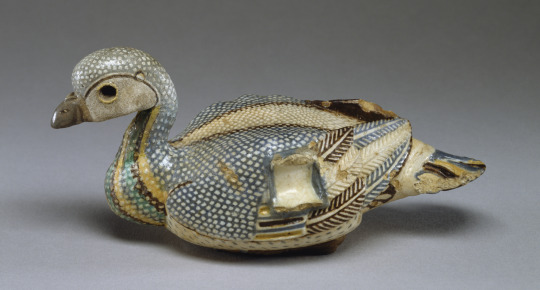
Vase in the shape of a duck, Ptolemaic Egypt (c. 3rd-2nd century BCE; crafted in Alexandria), faience wit a polychrome glaze
Currently in the collection of the Walters Art Museum in Baltimore, Maryland. accession no. 48.421
#isaac.txt#archaeology#art#egyptian archaeology#egypt#egyptology#hellenistic#ptolemaic egypt#faience
2K notes
·
View notes
Text
just ran across this perfect 2000-year-old portrait of a pet who knows what he did.
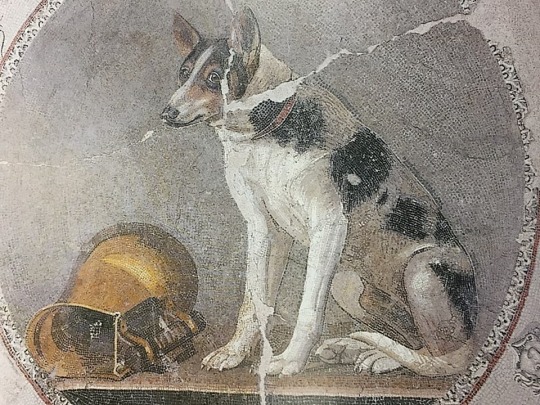
"Dog Mosaic," Ptolemaic period, 2nd century BCE, floor of a house in Alexandria, Egypt. 3.25x3.25m. (Pitcher is probably gold.)
1K notes
·
View notes
Text

Isis-Aphrodite
* 2nd century BCE - 1st century CE
* terracotta
* Turin Egyptian museum
Turin, June 2023
#Isis-Aphrodite#goddess#Ptolemaic Egypt#Roman Egypt#ancient#terracotta#statue#ancient colours#art#Isis#Aphrodite#Turin Egyptian Museum#my photo
483 notes
·
View notes
Text
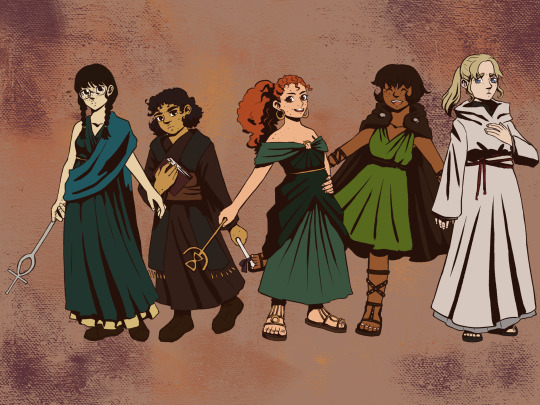
Posting the girls on this beautiful Flower Thursday
Read Flower if you haven’t already!
#the flower that bloomed nowhere#my art#utsushikome of fusai#ran of hoa-trinh#kamrusepa of tuon#ptolema of rheeds#ophelia fields#sorry girl for shortening your name but I’m not writing all that#anyway kamsuran is great
120 notes
·
View notes
Text

The Pharos of Alexandria by Roy Krenkel
#lighthouse of alexandria#pharos#alexandria#lighthouse#art#roy krenkel#ptolemaic#kingdom#ancient greek#ancient egypt#ancient world#egypt#monument#antiquity#history#architecture#seven wonders#lighthouses#structure#mediterranean#ship
320 notes
·
View notes
Text


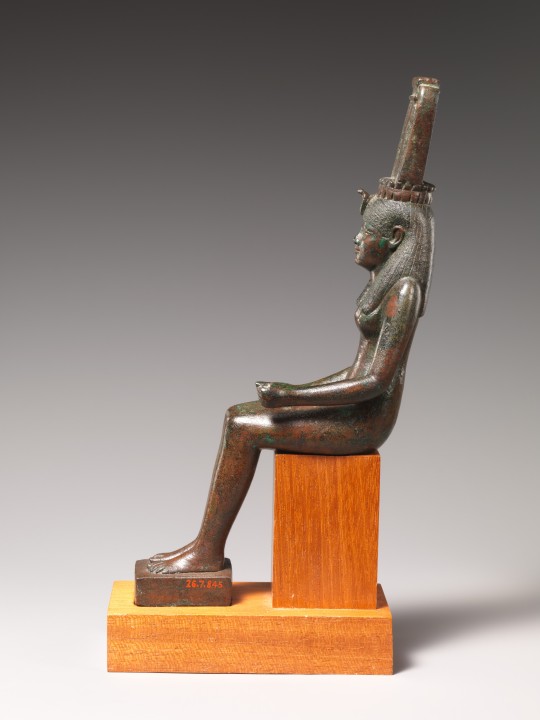
Statue of a goddess, probably Nehemetaui or Nebethetepet
Late Period–Ptolemaic Period
Dynasty 27–30
550–300 B.C.
The shrine-shaped sistrum sound-box worn as a crown by this figure indicates that either the goddess Nehemet-aui, the consort of Thoth, or Nebethetepet, a manifestation of Hathor, is represented. The features of the goddess suggest a date to the end of the 26th dynasty, or the 30th dynasty. As the kings of the 30th Dynasty built important buildings including a temple to the goddess Nehemet-aui at Hermopolis, the seat of the god Thoth, it is plausible this statue is Nehemet-aui.
H. 17.8 × W. 4.3 × D. 10 cm (7 × 1 11/16 × 3 15/16 in.).
H. (with tang): 20 cm (7 7/8 in.).
#Statue of a goddess#Nehemetaui#Nebethetepet#Late Period–Ptolemaic Period#statue#egyptian statue#ancient artifacts#archeology#archeolgst#history#history news#ancient history#ancient culture#ancient civilizations#ancient egypt#egyptian history#egyptian art
120 notes
·
View notes
Text

Ptolemaic (プトレマイオス) is so moe lol
73 notes
·
View notes
Text
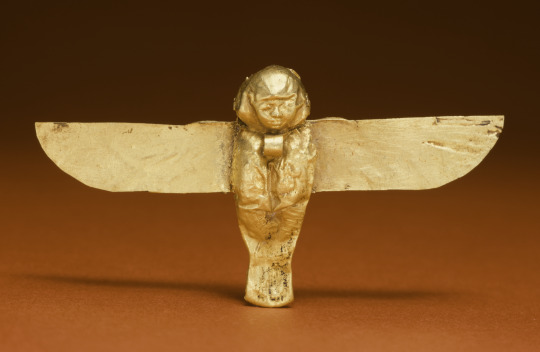
Ancient Egyptian depiction (gold with stone inlay) of the ba. One of the components of the multipartite soul in Egyptian thought, the ba, normally depicted as a human-headed bird, represented an individual's distinct personality. Artist unknown; early 3rd century BCE (=beginning of the Ptolemaic period). Now in the Walters Art Museum, Baltimore. Photo credit: Walters Art Museum.
#art#art history#ancient art#Egypt#Ancient Egypt#Egyptian art#Ancient Egyptian art#Egyptian religion#Ancient Egyptian religion#kemetic#Ptolemaic Egypt#Ptolemaic art#metalwork#gold#goldwork#Walters Art Museum
213 notes
·
View notes
Text
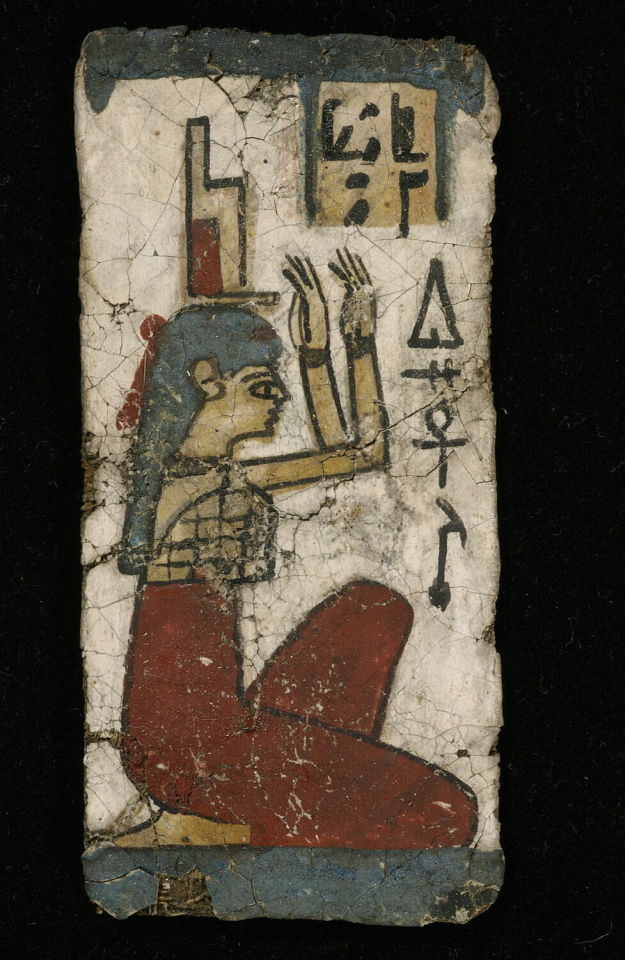
~ Decor: Isis
Period: Late Period-Ptolemaic Period
Date: 664-30 B.C.
Medium: Cardboard (glued and stuccoed canvas), Painting
#ancient#ancient art#history#museum#archeology#ancient egypt#ancient history#archaeology#egyptian#egyptology#egypt#isis#late period#Ptolemaic Period#664 b.c.#30 b.c.
1K notes
·
View notes
Text

Bronze statuette intended to hold a mummified cat, Ptolemaic Egypt, 330-30 BC
from The Metropolitan Museum of Art
431 notes
·
View notes
Text
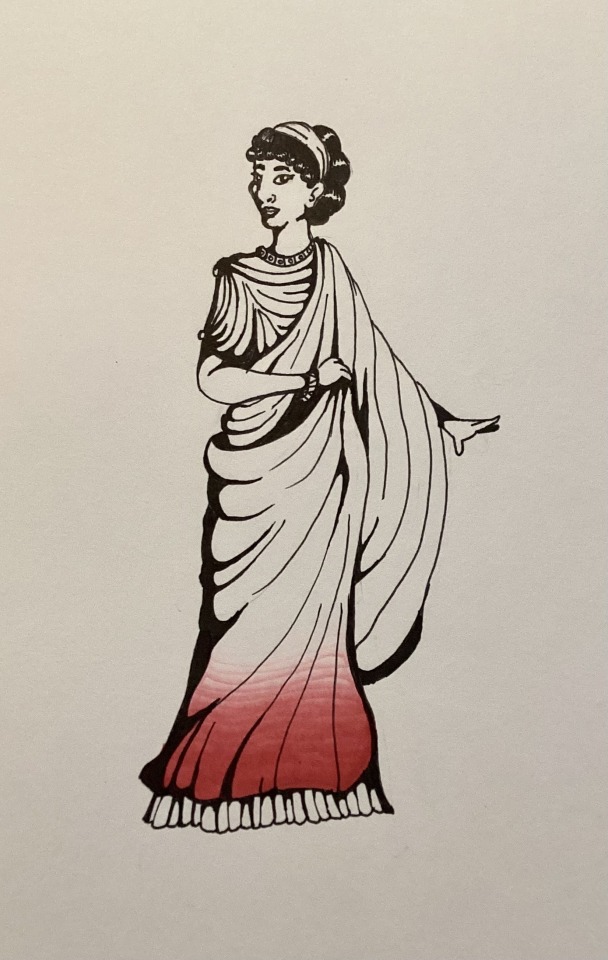
Day 7: Cleopatra Selene!
Cleopatra Selene and her brother, Alexander Helios, were born to Cleopatra VII and Marc Antony in 40 BC; the twins were named for the moon and sun. As her parents formed their Mediterranean empire, they named six-year-old Cleopatra Selene Queen of Cyrenaica and Libya - but those plans crumbled to dust with the defeat and suicides of her parents. She and her young brothers were paraded in triumph through Rome as war prizes by Caesar Augustus, who then had them raised in the household of his sister (and Marc Antony’s former wife) Octavia.
The fate of her brothers is one of the great mysteries of the era; they simply disappeared from history. Cleopatra Selene, however, did not. She married Juba II of Numidia, a vassal king of Rome, who after Numidia’s direct annexation was granted the neighboring North African kingdom of Mauretania. The marriage was a success, and the couple essentially acted as co-rulers. Together, they created new infrastructure, expanded trade routes, and promoted the arts.
Cleopatra Selene also brought old allies and advisors of her mother’s to her new court at Caesaros, in modern-day Algeria. She promoted Egyptian influence in architecture and religion, including a version of the famous Pharos lighthouse, and firmly defended Cleopatra VII’s legacy. Defiantly, she named her son Ptolemy.
The date of her death is uncertain, with proposed dates ranging from 5 BC to 17 AD. Augustus’ court poet, Crinagoras of Mytilene, composed a poetic epigraph in which the moon goddess herself veils her face in mourning at the Queen of Mauretania’s passing.
#cleopatra selene#roman history#egyptian history#ptolemaic dynasty#awesome ladies of history#october 2023#my art#pen and ink#suicide mention tw
73 notes
·
View notes
Text

Head of a lion, Late Period–Ptolemaic Period, 400–300 B.C.
Gypsum plaster,
H. 42.5 x W. 40 cm (16 3/4 x 15 3/4 in.)
On view at The Met Fifth Avenue
#art#history#design#style#archeology#sculpture#antiquity#head#lion#egypt#late period#ptolemaic#gypsum#plaster#the met
32 notes
·
View notes